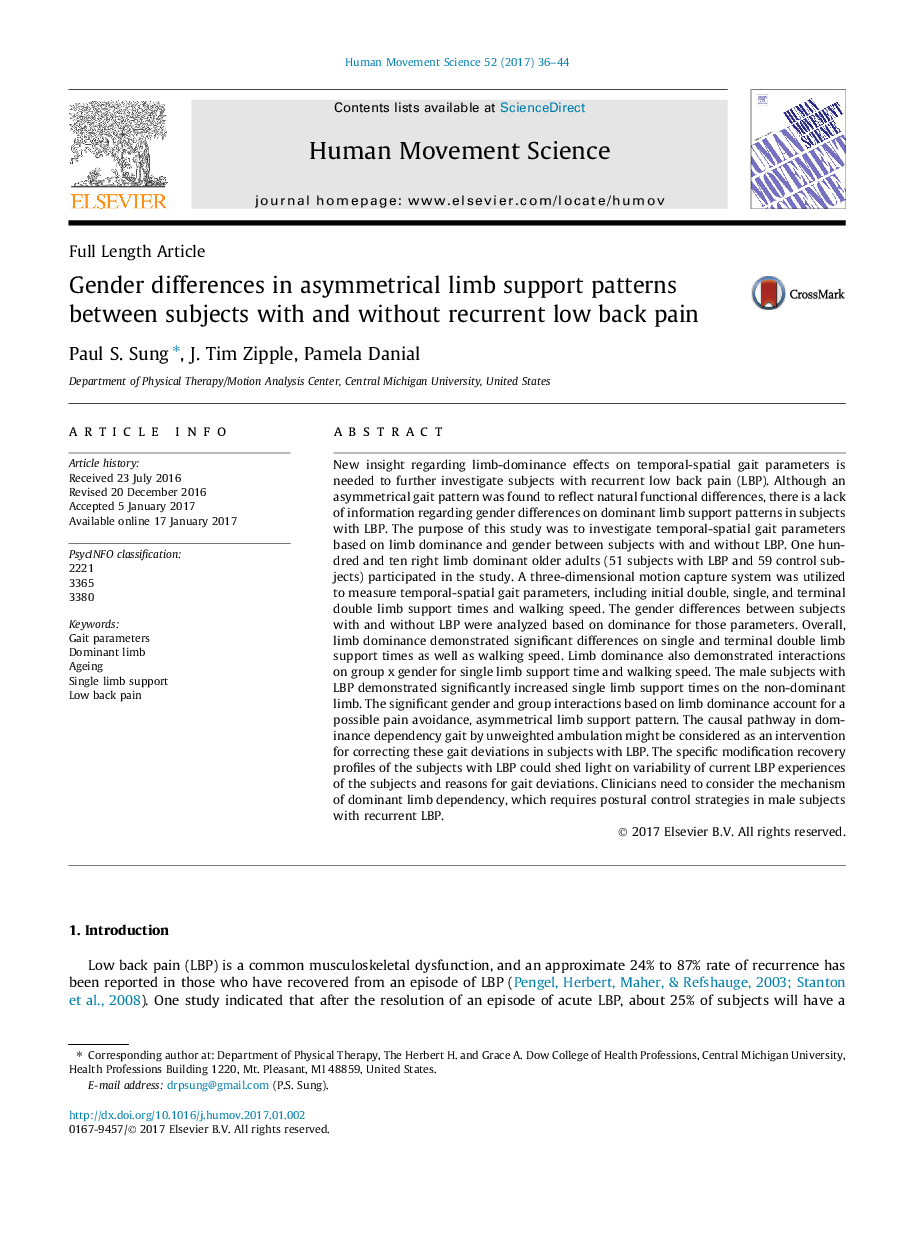| کد مقاله | کد نشریه | سال انتشار | مقاله انگلیسی | نسخه تمام متن |
|---|---|---|---|---|
| 5042053 | 1474213 | 2017 | 9 صفحه PDF | دانلود رایگان |
- Dominant limb dependency was significantly different between genders.
- The male subjects with low back pain demonstrated longer non-dominant limb support times.
- This asymmetrical limb support pattern requires postural control strategies.
New insight regarding limb-dominance effects on temporal-spatial gait parameters is needed to further investigate subjects with recurrent low back pain (LBP). Although an asymmetrical gait pattern was found to reflect natural functional differences, there is a lack of information regarding gender differences on dominant limb support patterns in subjects with LBP. The purpose of this study was to investigate temporal-spatial gait parameters based on limb dominance and gender between subjects with and without LBP. One hundred and ten right limb dominant older adults (51 subjects with LBP and 59 control subjects) participated in the study. A three-dimensional motion capture system was utilized to measure temporal-spatial gait parameters, including initial double, single, and terminal double limb support times and walking speed. The gender differences between subjects with and without LBP were analyzed based on dominance for those parameters. Overall, limb dominance demonstrated significant differences on single and terminal double limb support times as well as walking speed. Limb dominance also demonstrated interactions on group x gender for single limb support time and walking speed. The male subjects with LBP demonstrated significantly increased single limb support times on the non-dominant limb. The significant gender and group interactions based on limb dominance account for a possible pain avoidance, asymmetrical limb support pattern. The causal pathway in dominance dependency gait by unweighted ambulation might be considered as an intervention for correcting these gait deviations in subjects with LBP. The specific modification recovery profiles of the subjects with LBP could shed light on variability of current LBP experiences of the subjects and reasons for gait deviations. Clinicians need to consider the mechanism of dominant limb dependency, which requires postural control strategies in male subjects with recurrent LBP.
Journal: Human Movement Science - Volume 52, April 2017, Pages 36-44
